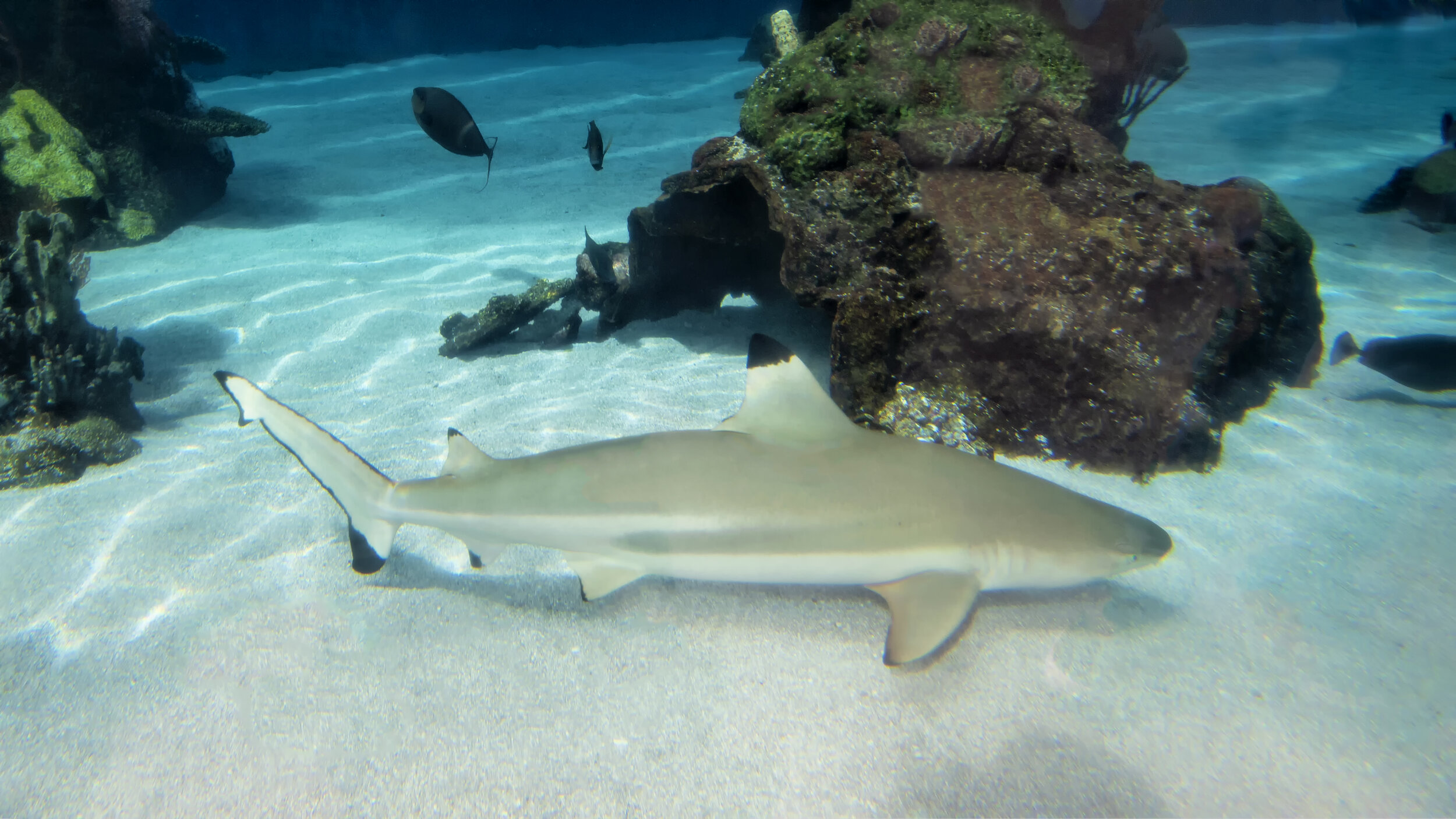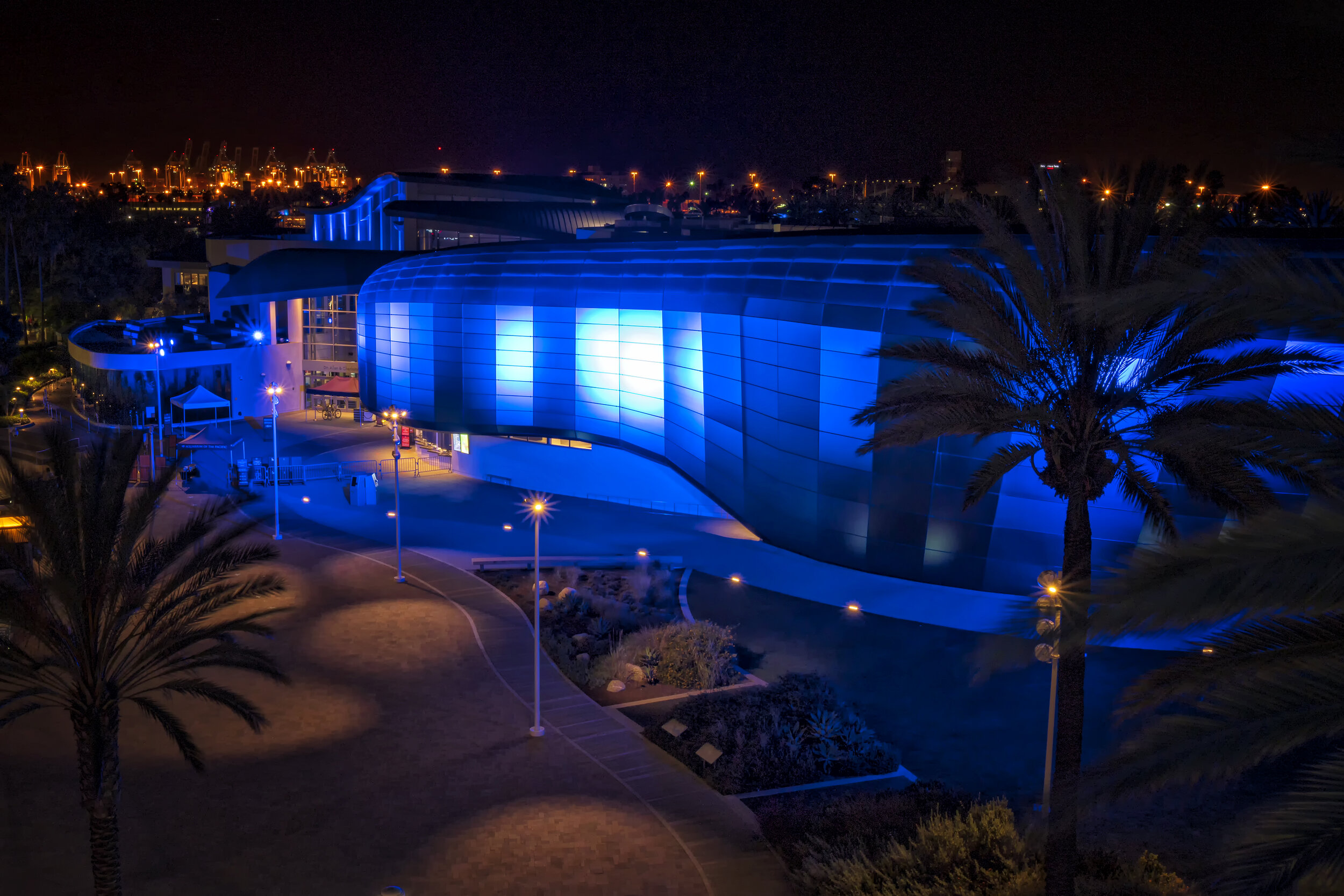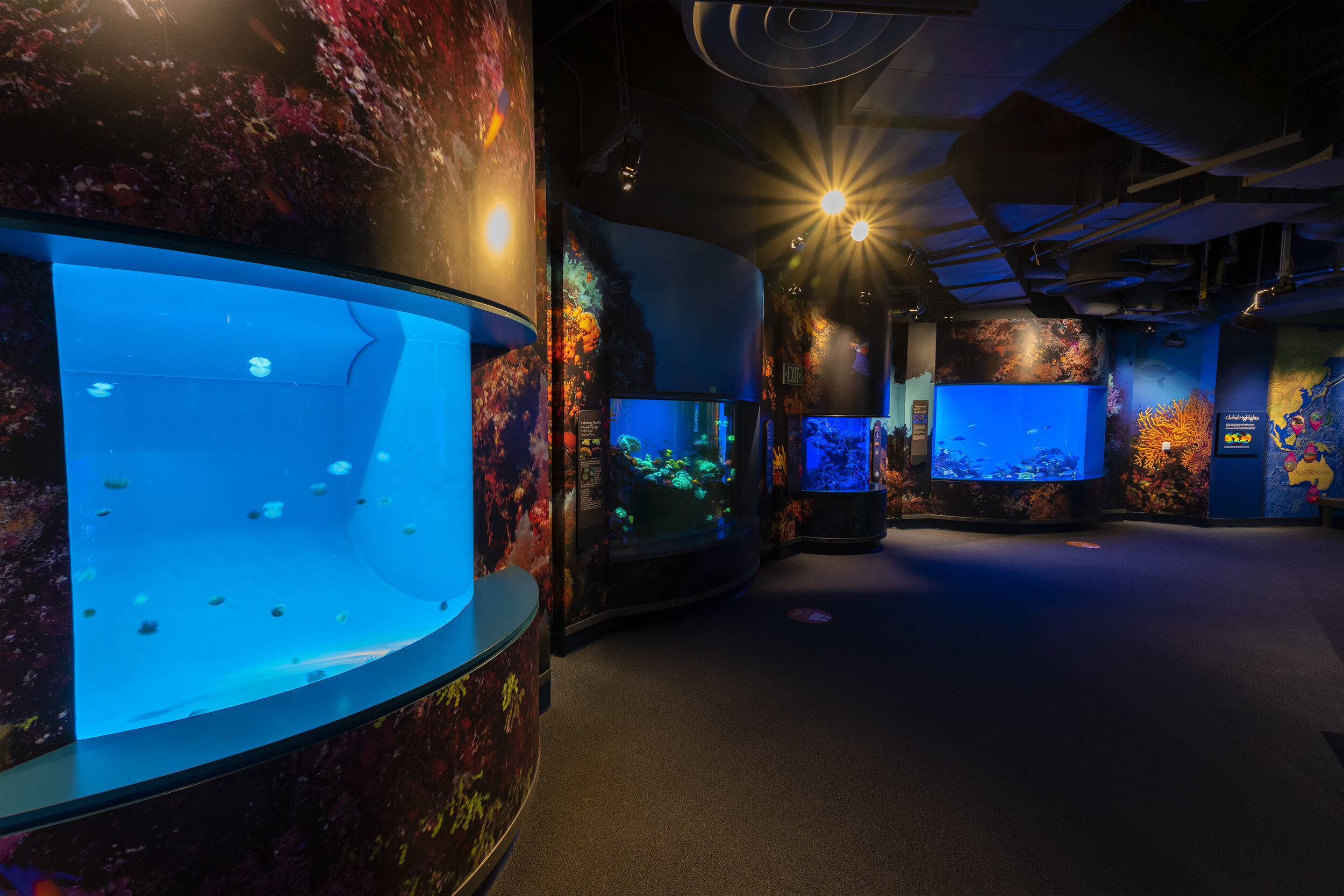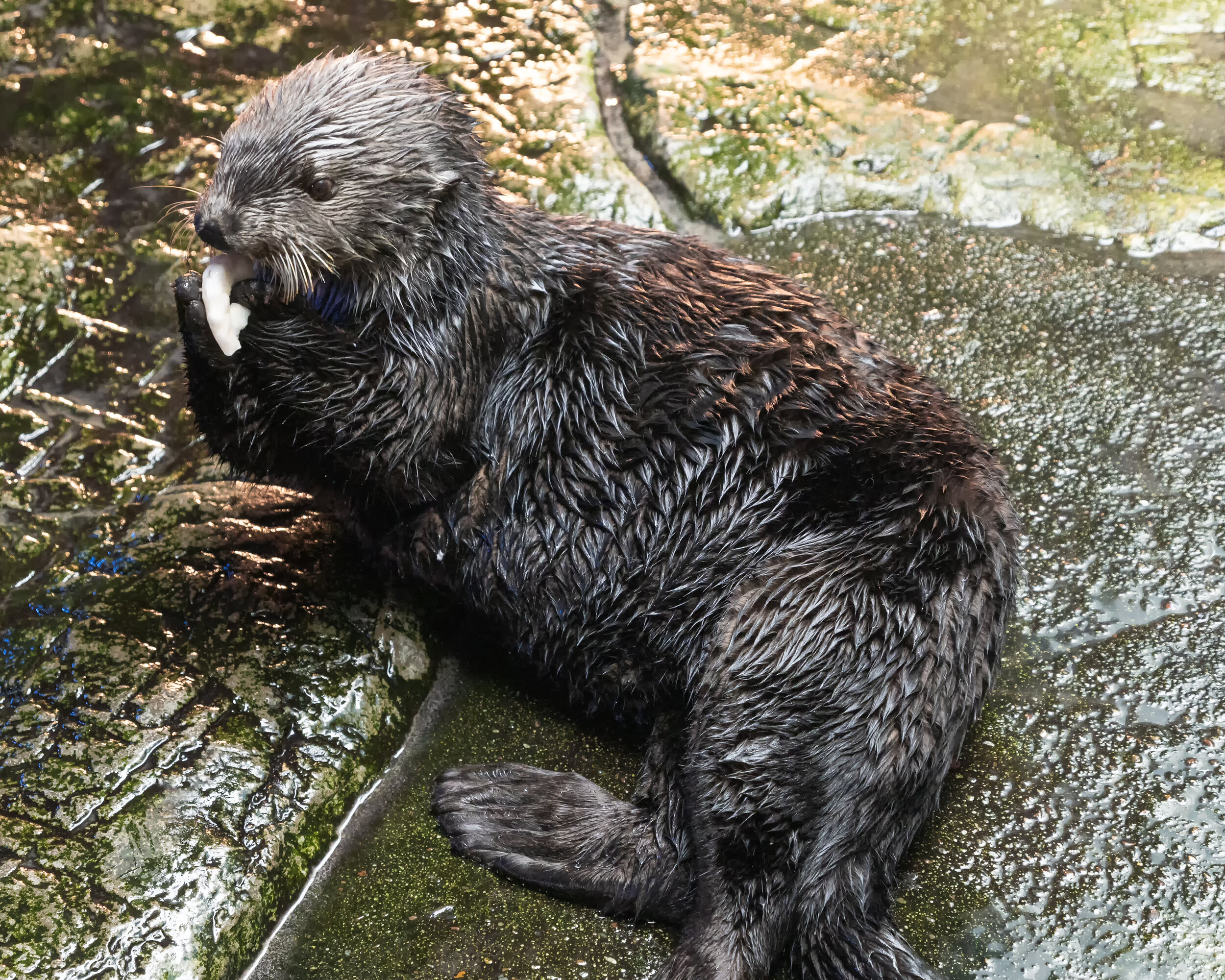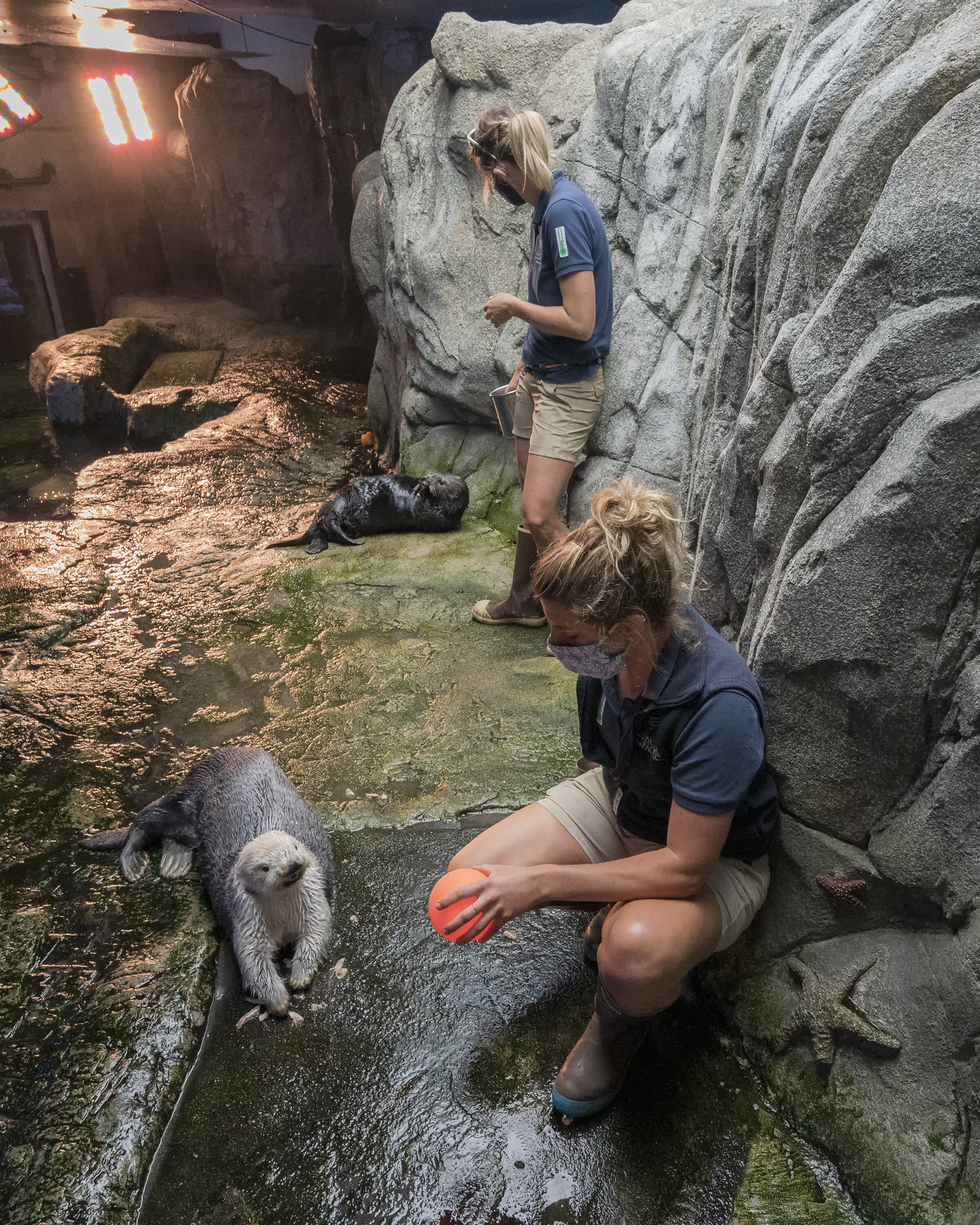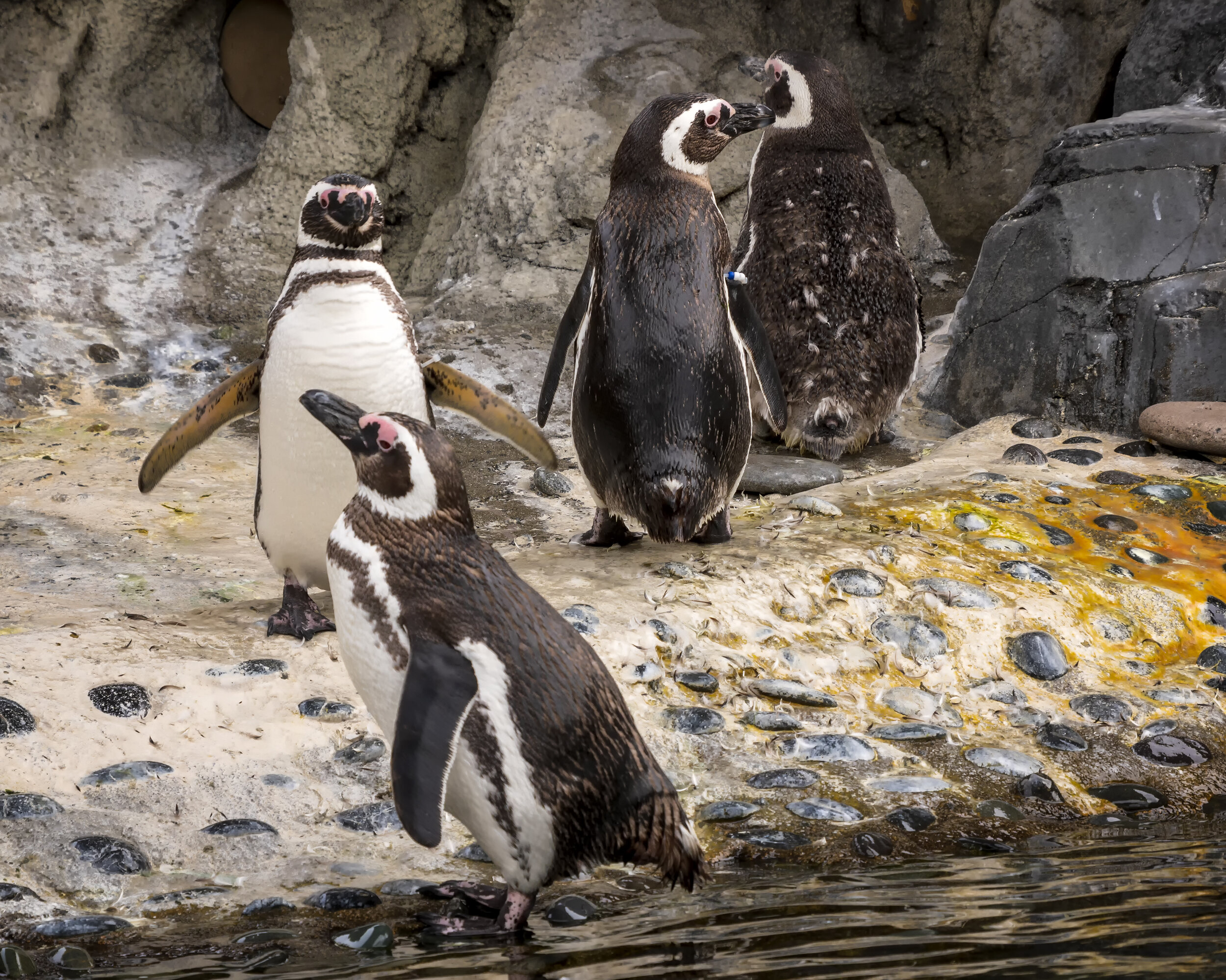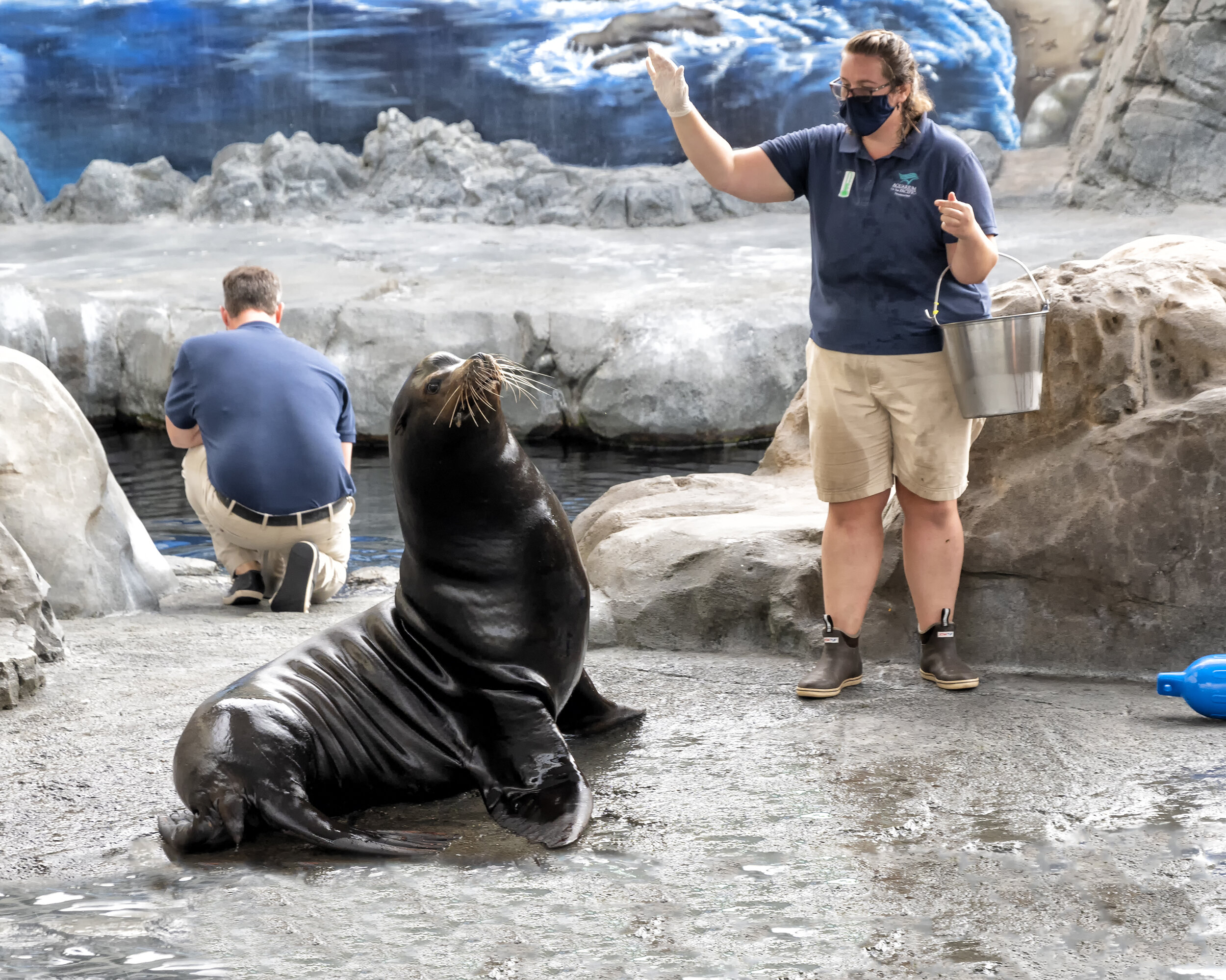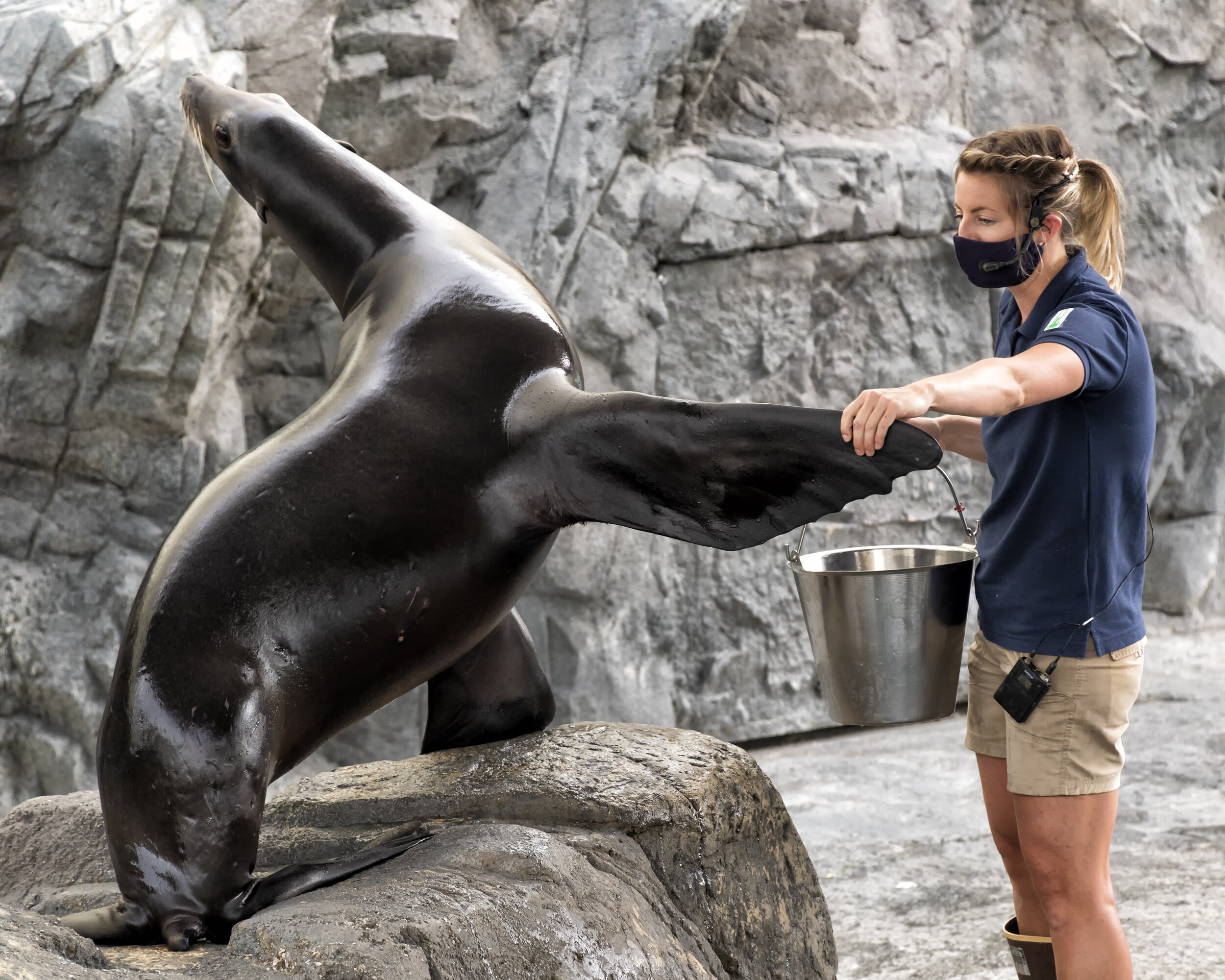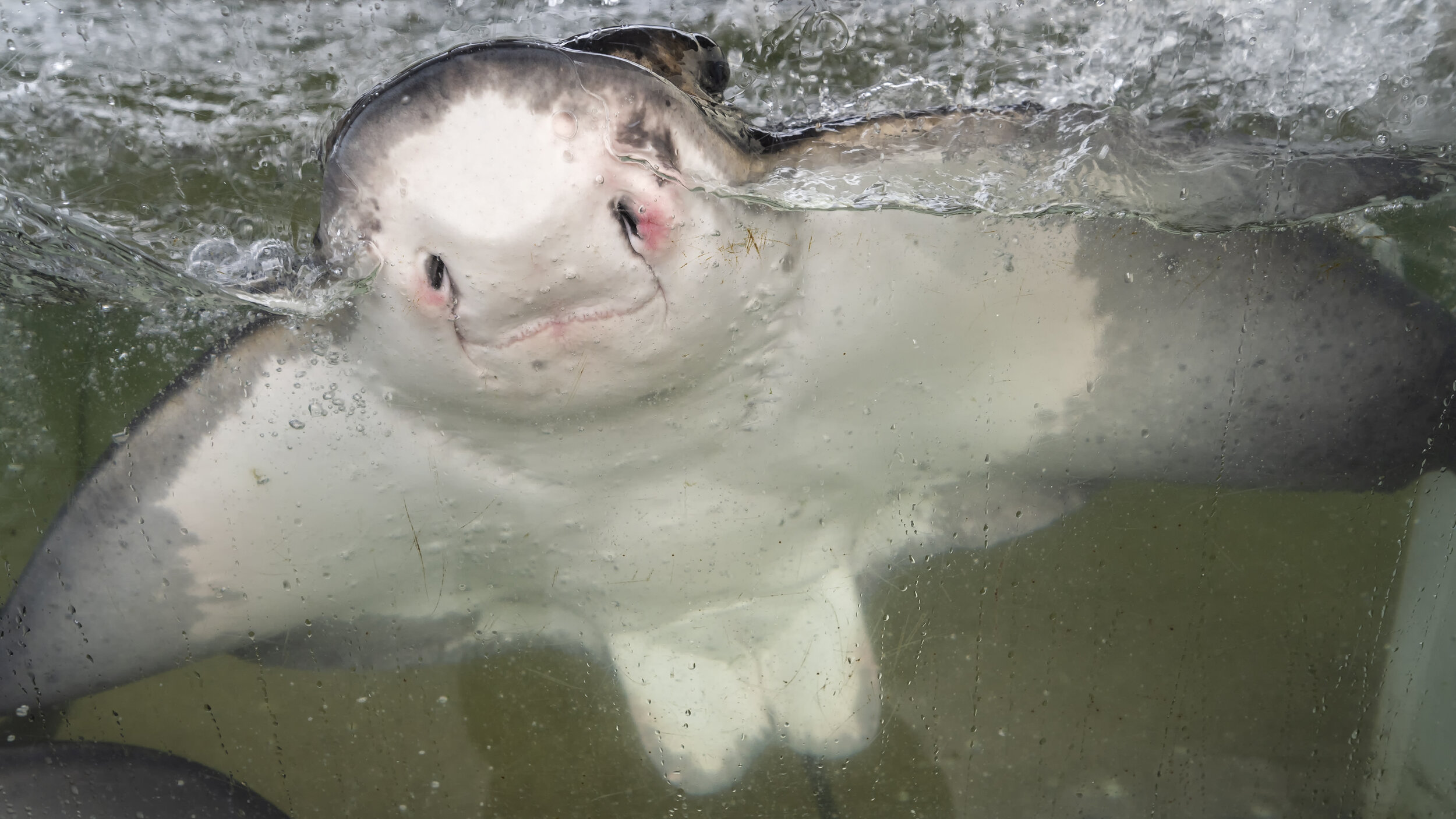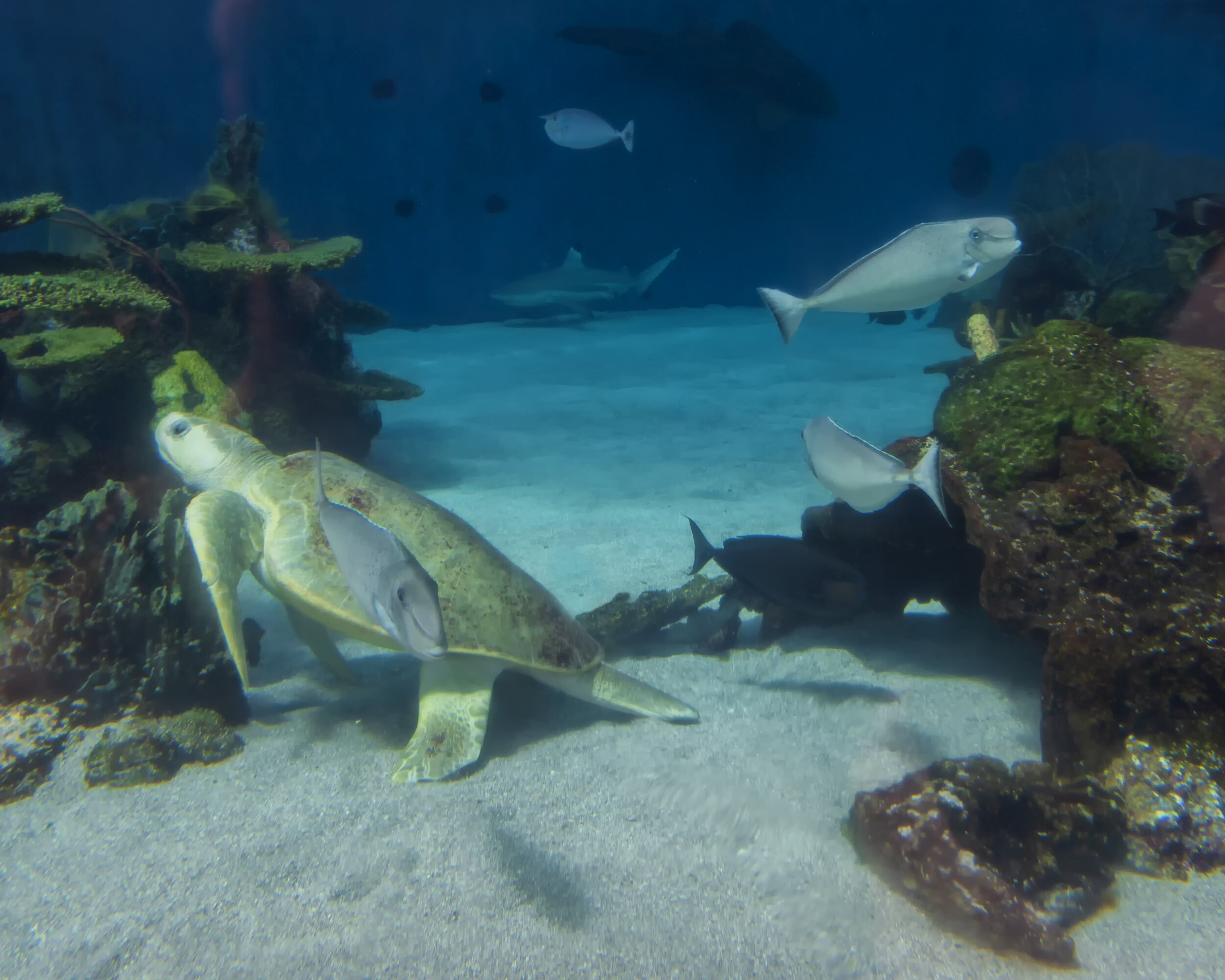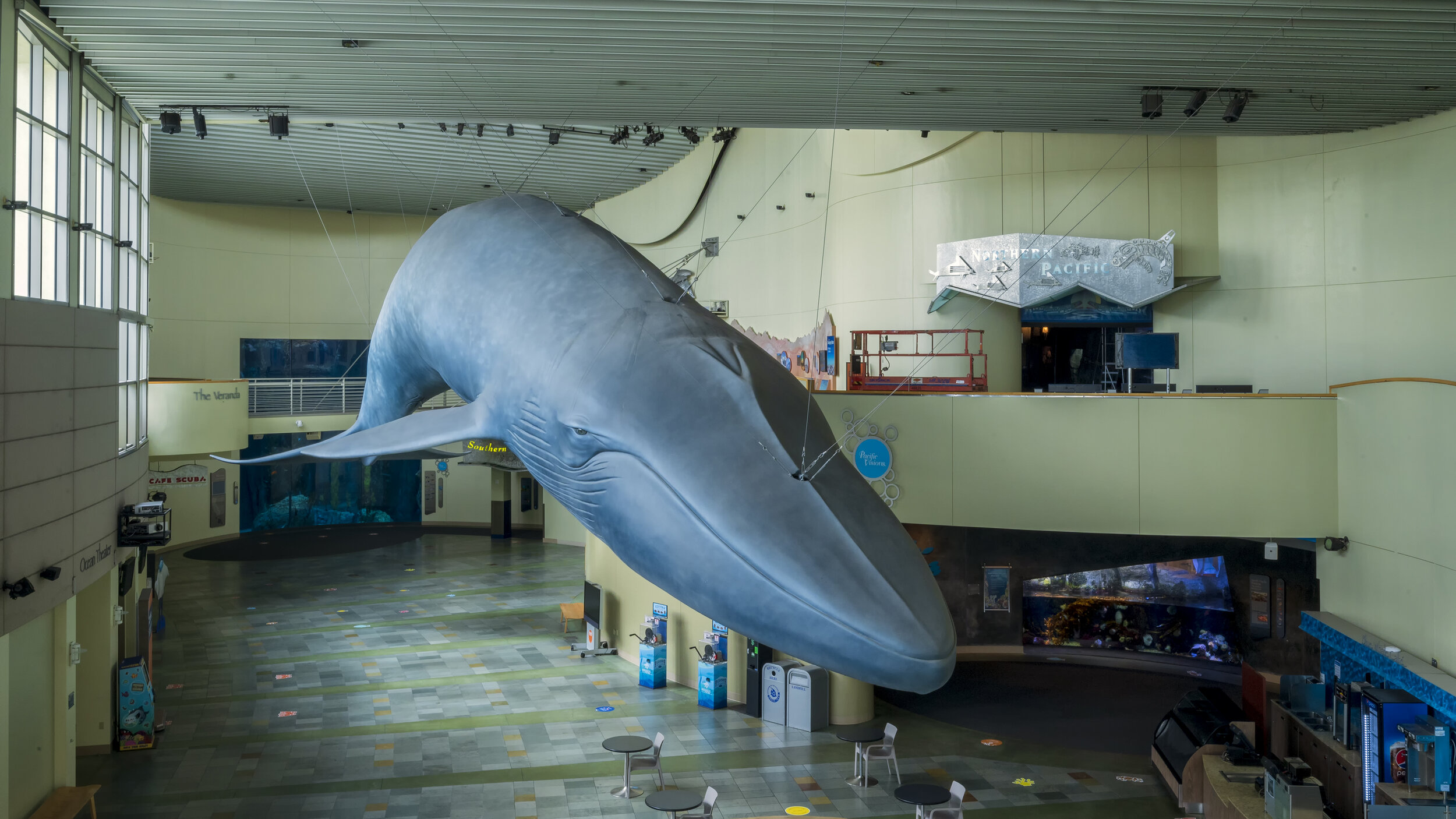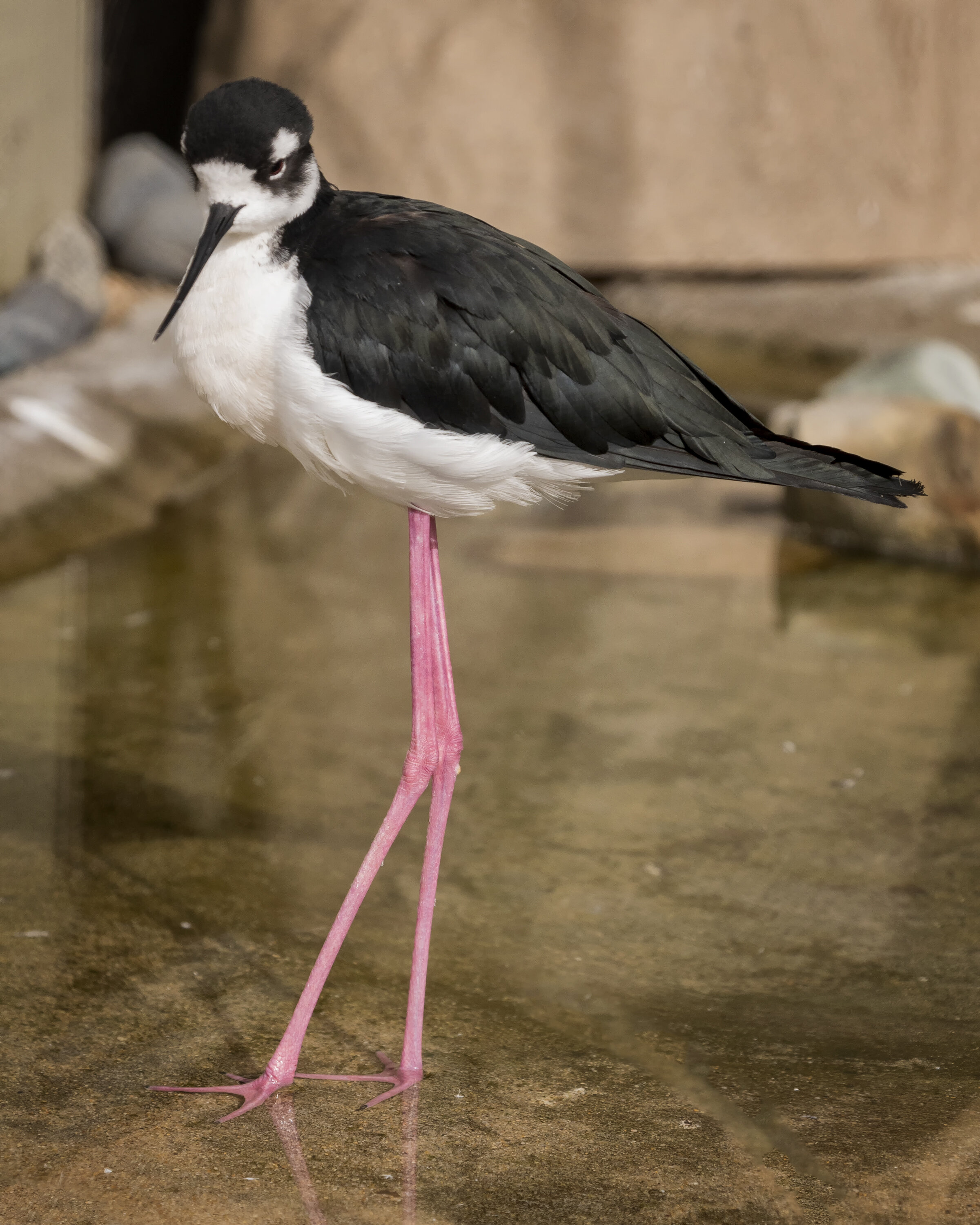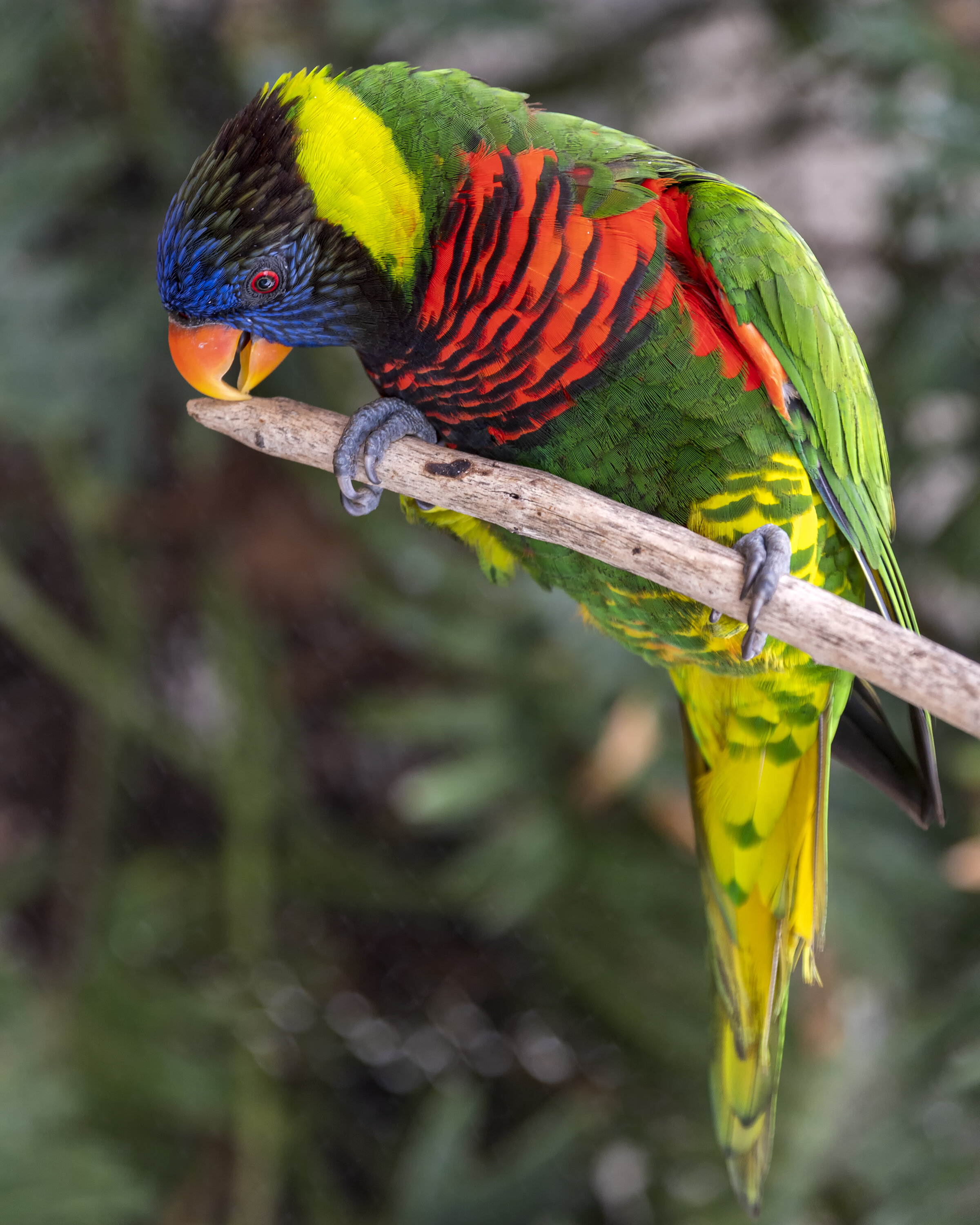Fish Gotta Swim, Sea Lions Gotta Eat By Photographer and Contributor Steve Tabor
Fish Gotta Swim, Sea Lions Gotta eat
By Photographer and Contributor Steve Tabor
Aquarium of the Pacific Reopens as It Learns to Cope with COVID-19 Restrictions
Things were going swimmingly for the Aquarium of the Pacific (AOP) during the first quarter of 2020. According to Anthony Brown, Vice President of Finance and CFO, says “From January to February, our attendance and revenue were up over the same period last year. We were 6% ahead in attendance and 16% better in total unrestricted revenue. We had high expectations for the busy spring break season in March and April.” Then suddenly, the COVID-19 closures struck, and the Aquarium was forced to close its doors in mid-March. It was not a simple matter of turning off the lights and locking the doors. Like most businesses Aquarium management analyzed its financial situation and developed a plan to address the ongoing and necessary obligations (like food, supplies, and care for animals, and rent obligation to the City of Long Beach) and the required staffing in the new normal.
Unlike other businesses, the Aquarium still needed to preserve the essential operating systems and personnel that maintain the aquariums and exhibit areas as well as provide for the care and feeding of the multitudes of fishes, marine mammals and birds housed in the Aquarium. Engineering workers are needed to keep the water systems and other mechanical systems in good order to provide safe and habitable environments. The animal care takers prepare daily meals, maintain aquariums and displays along with interacting with the animals on a daily basis. According John Rouse, Vice President of Operations, “It did not appear some animals even noticed we were closed. Animals such as the California sea lions and sea otters may have noticed fewer people on the other side of the window during the full closure, but they always have their regular enrichment and interaction sessions with staff. Some animals like sea jellies and sea stars may not have known that anything changed.”
Brown states, “Keeping up with the impact of COVID-19 has been a moving target. Addressing staff costs as well as determining staffing needs in this environment has been like nothing we have previously encountered. We have reached a new normal when it comes to budgeting. To cope with the losses in revenue, we have relied on lowering our overall operating costs in addition to dipping into our budget reserves.” This has also been a time to consult with representatives from the California Association of Museums (CAM) and the California Association of Zoos and Aquariums (CAZA) who are working with State officials regarding re-opening guidelines, procedures, and timelines. Aquarium officials agree that limited attendance, maintaining social distancing along with other safety protocols will become standard operating procedures for several months ahead.
During the closures, Aquarium staff has been proactive. Rouse states, “The closures have allowed Aquarium staff to perform renovations to public areas and complete other facility projects that were scheduled for a later time. These projects will probably go unnoticed by most visitors, but they will certainly add to their overall enjoyment when they visit the Aquarium.”
COVID-19 has inspired Aquarium staff to rethink the ways for the Aquarium to keep an active public presence. A visit to the Aquarium’s website reveals more web streaming activities for children and adults. Activities include live webcams of animals and lectures on a variety of ocean related topics including marine life, conservation, and global climate change. The Aquarium’s Education staff has developed an Online Learning Academy with a Summer Kids Club, puppet shows and an ocean resource guide. Rouse states, “All of this is available free of charge.”
The Aquarium is known for hosting a variety of special events from cultural celebrations, a Fourth of July BBQ, interactive activities, and various fundraising events. Brown states, “At this time, Aquarium officials are exploring ways they can continue these special programs and activities under the COVID-19 restrictions. Plans are underway for their annual Sea Fare fundraiser event. Traditionally, the event was hosted at the Aquarium and feature a silent auction and a sampling of food items from variety of local restaurants. They are hoping to host the event this year, but realize that at least the auction portion will be conducted online with the possibility of providing coupons individuals can take to the restaurants to sample a selection of dishes.”
In mid-June, the Aquarium was allowed to reopen their entire facility to the public, but at only 25% of its capacity. This welcome news, not only allowed the Aquarium an opportunity to generate some much-needed revenue, but it allowed the Aquarium to bring back some of their previously furloughed staff members and some members of the Aquarium’s volunteer corps. Rouse quickly points out, “Our volunteers perform a variety of tasks assisting Aquarium paid staff and performing activities that are vital to our operation.”
For the reopening, the Aquarium moved to an on-line only ticket sales system which eliminated entry lines and allowed staff to limit the number of visitors on site to avoid any issues related to capacity restrictions and to maintain social distancing requirements. Rouse states, “In order to meet the additional safety protocols, the Aquarium increased the number cleaning staff to sanitize the surfaces throughout the Aquarium on a regular basis as well as ensure that hand sanitizers are stocked throughout the Aquarium and restrooms are maintained on a more frequent basis.”
The optimistic environment suffered a severe blow on June 30th when Aquarium officials received word that they were forced to close their interior galleries to visitors because of the spikes in confirmed COVID-19 cases in Los Angeles County. Brown admits, “At this time, there is no definite indication of when we will be able reopen our interior galleries. Obviously, we hope that it will occur sooner rather than later.”
However, the closure of the interior galleries did not force the Aquarium to close all of its doors. Although less than half the size of its interior galleries, utilizing the existing its outdoor exhibit area the Aquarium offers guests access to some of its most popular exhibits: The Shark Lagoon, the Lorikeet Aviary, and June Keyes Penguin Habitat. Guest can also visit the ray touch tank, the steelhead trout exhibit, the Shorebird Sanctuary exhibit, the Seal and Sea Lion Habitat and the Molina Animal Care Center. Although the children’s playground is closed, the outdoor area features a food and retail outlet. Aquarium staff has developed additional programming that aligns with COVID-19 protocols, to provide additional guest experiences such as a return of the popular the Penguin Encounter.
The Aquarium is open seven days a week with the benefit of extended weekend hours. Monday through Thursday, the Aquarium is open 9:00 a.m. to 6:00 p.m. Fridays, Saturdays, and Sundays the Aquarium is open 9:00 a.m. to 9:00 p.m. For non- Aquarium members admission is $15 per person and tickets must be purchased online or by telephone prior to your visit. Aquarium members need to make their reservation online or by telephone and show their membership card at the time of entry. Social distancing and other COVID-19 safety protocols are in place and all visitors, ages two and up, must wear a mask or face covering.
Rouse points out, “This is a great time to visit the Aquarium. Our reduced capacity allows visitors to better access our exhibits in a more relaxed environment.”
Steve Tabor Bio
This South Bay native’s photographic journey began after receiving his first 35 mm film camera upon earning his Bachelor of Arts degree. Steve began with photographing coastal landscapes and marine life. As a classroom teacher he used photography to share the world and his experiences with his students. Steve has expanded his photographic talents to include portraits and group photography, special event photography as well as live performance and athletics. Steve serves as a volunteer ranger for the Catalina Island Conservancy and uses this opportunity to document the flora and fauna of the island’s interior as well as photograph special events and activities.
Watch for Steve Tabor Images on the worldwide web.

